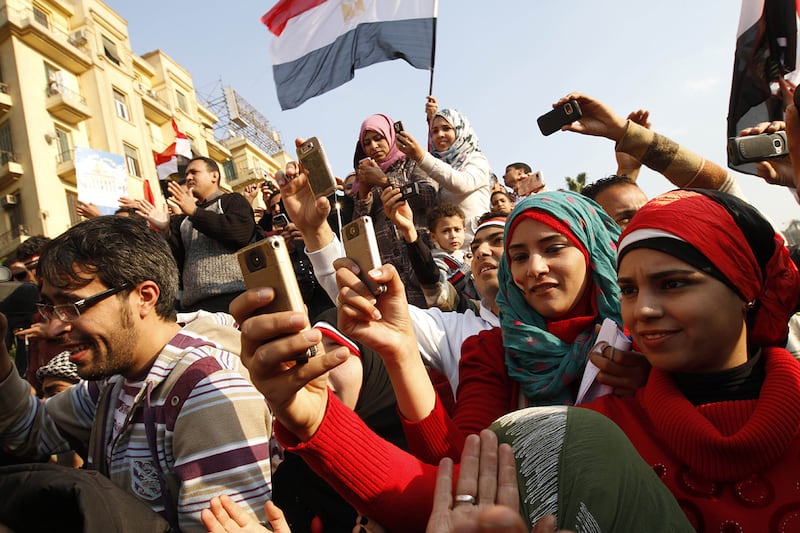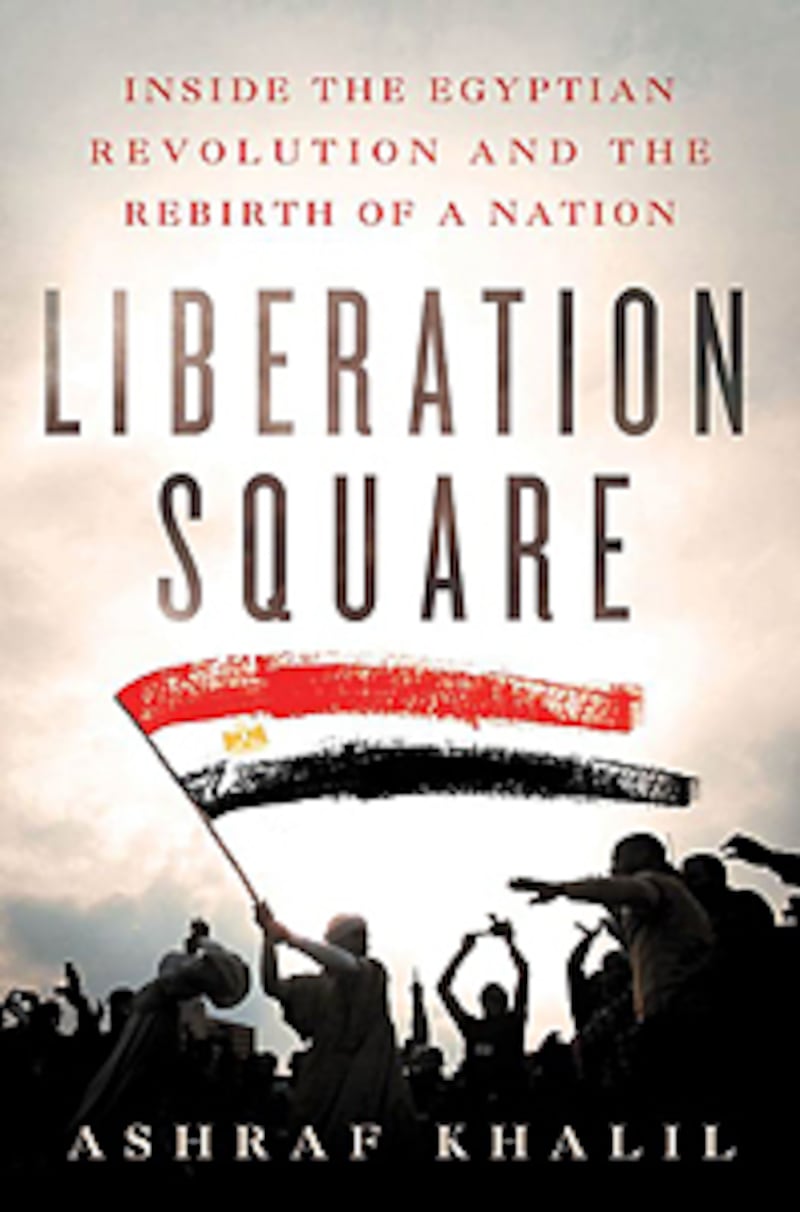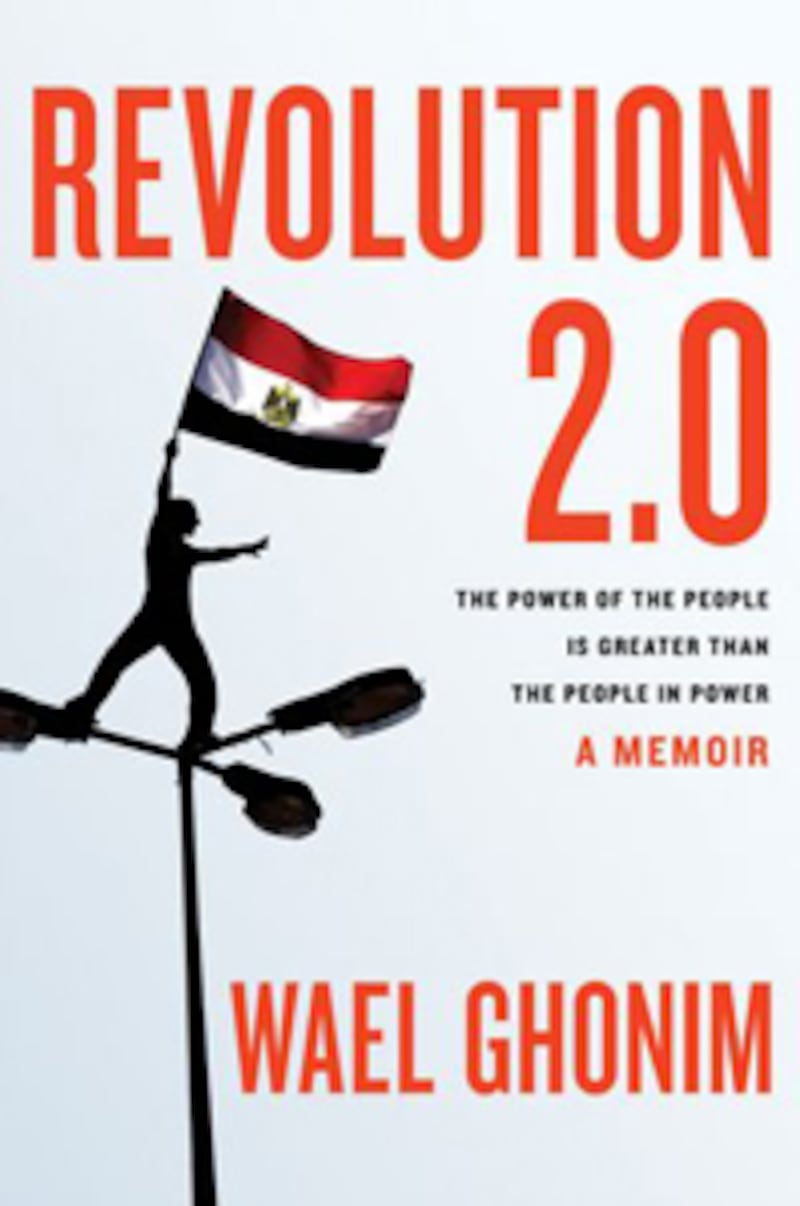Egyptian riot police, cocky after beating dissidents and firing buckshot at them, have taken up positions in the vicinity of Tahrir Square. The military has erected concrete barriers across major downtown arteries to hem in demonstrators. Street vendors hawk gas masks against the ubiquitous tear gas, while thousands demand an end to the dictatorship and state of emergency that began in 1952.
If you think this scene is from the beginning of the now-iconic Egyptian uprising that began on Jan. 25, 2011, think again. It’s a description of Tahrir Square today.
What happened to Egypt? How did a sluggish and paralyzed police state rise into the world’s symbol of peaceful revolution? And has the heroic Tahrir Square of a year ago crumbled, or is it still working its magic?
Two books released this month can help us start to make sense of this puzzle, with detailed accounts of the uprising a year ago and some insight into the institutions and attitudes that shape Egypt’s largely conservative society.

The first is a memoir by Wael Ghonim, the celebrated Google executive who helped spark the uprising with a wildly popular Facebook page dedicated to a middle-class kid beaten to death by the police. Ghonim tapped into a demographic that proved crucial to the Egyptian uprising: upwardly mobile college-educated youth frustrated by Egypt’s stagnation but wary of politics and activism.
As he tells his own story, Ghonim is a driven, socially awkward young man—ambitious but almost allergic to fame. His early clandestine ventures online revolve around building a library of religious recordings called IslamWay.com. He’s offered great sums of money but instead quietly donates it to charity, all while he’s still a teenager. In the years around 9/11, he marries and pursues his dream, which has nothing to do with unseating Mubarak’s tyrannical police regime. No, young Wael wants nothing more than to work at Google, a goal he finally achieves in 2008.
In the summer of 2010 a young man named Khaled Said was beaten to death outside an internet café. When he saw a photo of the murdered man, Ghonim recalls that he wept with outrage. “Khaled Said was a young man just like me, and what happened to him could have happened to me,” Ghonim writes in Revolution 2.0: The Power of the People Is Greater Than the People in Power. He immediately launched a page called “We Are All Khaled Said,” which quickly became a clearinghouse for dissatisfaction with Mubarak’s regime.
Ghonim helped organize “silent stands”: symbolic, low-key protests in which Egyptians wore black and stood for an hour at a preannounced spot. Participants stood an arm’s length apart. They prayed or meditated but did not chant slogans or talk to each other, in order to skirt the blanket ban on public assembly.

Tens of thousands joined Ghonim’s boisterous online community, and he chronicles in detail the Facebook discussions that led his people to cross the barrier from the relative safety of Internet activism to the tangible danger of street demonstrations.
What distinguishes Ghonim and quickly becomes clear in his memoir is that the ambitious young IT professional is anything but a revolutionary. He’s a sentimental nationalist—proud, patriotic, and devout—and, if anything, proves quite naive about the realities of politics.
In fact, Ghonim won the sympathy of so many Egyptians precisely because of his relatively tame positions. He wasn’t against authority, or the police, or the government; he was simply horrified by the extreme abuses of some elements of the state—the rogue police and the corrupt ministers rather than the entire system. Long after other activists were battling the unelected generals who inherited Mubarak’s dictatorship and extended most of his repressive tactics, Ghonim was still professing to trust the military.
It’s that modest boy-next-door profile that made Ghonim’s dissent so electrifying in January 2011. State security agents arrested him on the third day of the uprising and kept him blindfolded in prison for 11 days. Immediately upon his release, he appeared on a popular television show whose host was not considered a regime critic. There he wept about the deaths of the protesters at the hands of “those who cling to power.”

The interview was a turning point. The next day, the crowds at Tahrir were bigger than ever, including many middle-class Egyptians who had stayed away until they saw Ghonim on television.
For a while, Ghonim was a darling of the Western media, because of his tech profile and his role in catalyzing the Jan. 25 protests. After an embarrassing encounter in which he is tricked into appearing to meet with members of Mubarak’s last government, he quietly steps out of the limelight. He ends his story on Feb. 11, the day Mubarak resigns. He avoids any attempt to explore the morass that has developed since and his role as an activist. A popular Twitter parody called “GhonimWithBalls” mocks his incremental positions over the last year and his reluctance to criticize the military’s obvious abuses of power and the law.
Revolution 2.0 contains surprisingly few meditations on the significance of cyberactivism or even on revolutions. The title comes from a passage on the final page, and seems almost like an afterthought, the brainchild of a shrewd marketer—which Ghonim certainly is—but not a significant part of the narrative. I was glad not to be bludgeoned with technospeak and online evangelism. But I was disappointed to find, ultimately, a very small-bore narrative.
At the end, we come to understand that even politically conservative Egyptians were so angry at Mubarak’s mishandling of their lives that they were willing, finally, to take risks to oppose him. In Ghonim’s case we learn that they threw in their lot with revolution without abandoning their old fears or affection for consensus. Ghonim describes himself as constantly afraid, lacking physical courage and any desire for heroism.
Like many a prophet of crowd-sourcing, Wael Ghonim ultimately presents himself as a symptom, rather than a catalyst, of a critical moment in history. He created a useful portal that was one among many; for a long time, there was another Khaled Said page that was more strident, radical, and popular than Ghonim’s, until Facebook shut it down. As Google’s chief marketing executive in the Middle East, Ghonim knew how to sell and promote. He put those skills to good use in nudging the hesitant, fearful members of his Facebook community, first to speak their minds online and ultimately to commit their names and later their bodies to revolutionary acts. Revolution 2.0 narrates a fascinating but narrow slice of the process through which apathetic and passive people are politicized.
For a broader look at Egypt’s transformation, one can turn to journalist Ashraf Khalil’s Liberation Square: Inside the Egyptian Revolution and the Rebirth of a Nation. Khalil’s illuminating reporting situates the revolt in the stultifying decades that preceded it. (I should mention that Khalil is a friend dating back to the days when we were both based in Baghdad.) He spends nearly half his story on the final decades of Mubarak’s crony rule, detailing the pompous ineptitude of the aging dictator with eternally young hair. And he does an admirable job pulling together the threads of the early dissident and activist efforts rooted in the late 1990s.
By the time Khalil gets to the demonstrations of Jan. 25, 2011, we understand why some Egyptians felt they could no longer “walk next to the wall,” as the proverb instructs, and felt they might as well risk death or imprisonment rather than submit to Mubarak’s capricious police state. But we share the wonder of Khalil, and many of the activists he interviews, who even as they promoted an uprising doubted that Egyptians would join them in significant numbers.
Where Ghonim is earnest and idealistic, Khalil is cynical and funny. He ridicules the flailing of an out-of-touch regime, describing a regime hack on the third day of the uprising “delivering a medley of NDP’s greatest hits,” ending with a declaration that “Egypt is stable, God willing.” The next day the man’s office was in flames and a popular movement had driven the police completely off the streets.
While its author pays careful attention to the political forensics of Jan. 25, Liberation Square is no less sensitive to its earthier causes. Egyptian youth, Khalil writes, were frustrated no less by the lack of job opportunities than by a system that made it nearly impossible for them to afford their own apartments so they could have sex and get married. He peppers his narrative with anecdotes from activists at the center of confrontations spanning more than a decade.
But like Ghonim’s memoir, the satisfying bulk of Khalil’s narrative ends with Mubarak’s fall. In the final portion of the book, Khalil addresses the turbulent period that followed what the author accurately describes as a “palace coup.” He avoids a head-on acknowledgment that Egypt’s popular uprising has yet to amount to a revolution; Mubarak’s system, a year after his departure, is still firmly in place.
Taken together, the two books suggest some explanation for why Egypt has yet to complete what began on Jan. 25 but since has sputtered. Beyond the hard-core activists, many of the participants in Tahrir were ambivalent political actors like Ghonim, who combined online savvy, moral outrage at the regime, and a simplistic view of the workings of government.
Many Egyptians professed support for the revolution but disgust for politics—an attitude that stanched most of Tahrir’s momentum after Mubarak stepped down. Ghonim’s principled decision to keep his hands clean of the nitty-gritty of electoral political parties was a harbinger of a broader withdrawal of the technocratic elite from the political arena—leaving it open to domination from religious figures, political opportunists, and existing political groups like the Muslim Brotherhood, and the discredited and toothless official opposition licensed by Mubarak.
Khalil, a thorough journalist, paints a full canvas of the tools of domination built by Mubarak’s police state, from the network of thugs and informants to the ubiquitous state security agents, who listened at cafés, questioned doormen, and vetted every government job appointment, no matter how minor. This infrastructure of oppression remains almost entirely intact today.
Through tireless propagandizing, intimidation, and cooptation, the state has also built a major constituency for its dogma: stability above all, trust in authority and the security apparatus, paranoia about outside meddling by “hidden hands.” There are countless Egyptians who, without regime prodding, will see foreign agendas and saboteurs behind every apparently spontaneous act by an Egyptian seeking a more transparent, accountable government.
Khalil tells us of a mob that sets upon him while he’s out reporting, convinced by his American-accented Arabic that he’s some kind of evil agent. Ghonim tells us of the interrogator who abuses him for days, but then implores his high-profile captive not to talk publicly about the mistreatment; he might further destabilize an inflamed country. Ghonim initially complies, an understandable but revealing compromise.
Deep currents of xenophobia and chauvinism have tainted Egyptian political life, and help explain why the military dictatorship has managed to retain so much public support despite at best bungling the transition from Mubarak, and at worst cynically extending the worst practices of the former pharaoh’s rule.
Egypt might yet complete the popular movement that began a year ago, either through further protests or through the tainted electoral process that began in November. Revolutions—when they succeed—often take years, and it’s premature to say that Egypt’s won’t get past the first phase.
But as a revolution it has clearly stalled, evidenced by the fumbling generals who have imposed a series of outrages on Egypt: systemically sexually violating female protesters with “virginity tests”; sending 13,000 civilians and counting before military tribunals; standing by as police and thugs have killed dozens of unarmed demonstrators; and arresting political activists on spurious charges so trumped up they would be funny if they didn’t have such serious consequences.
This coming Jan. 25, both the military leadership and the youth activists who detest them have planned major public demonstrations. They might mark yet another stage in a slowly gestating uprising, or just another inflection point on the establishment of Egypt’s fourth enduring military dynasty since the Free Officers coup of 1952.





